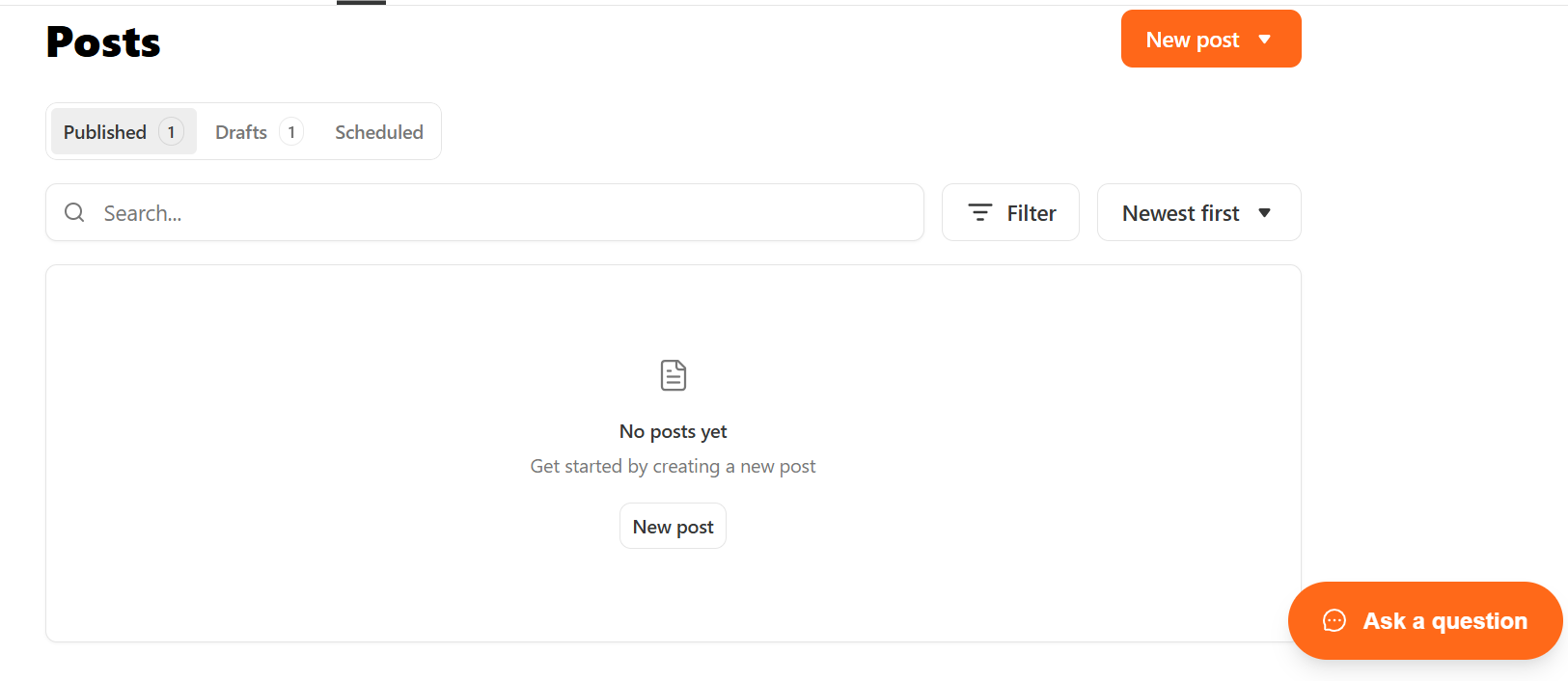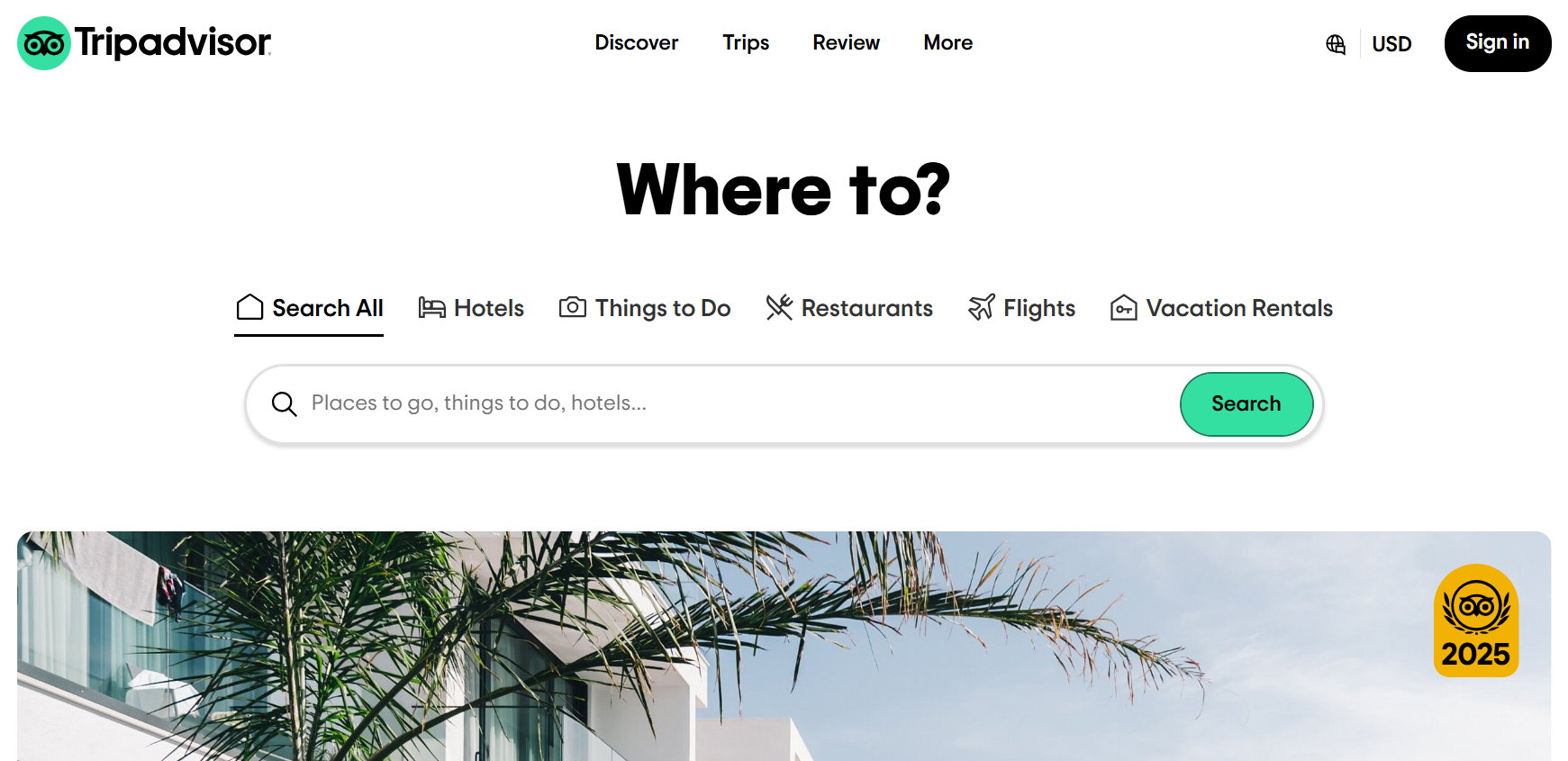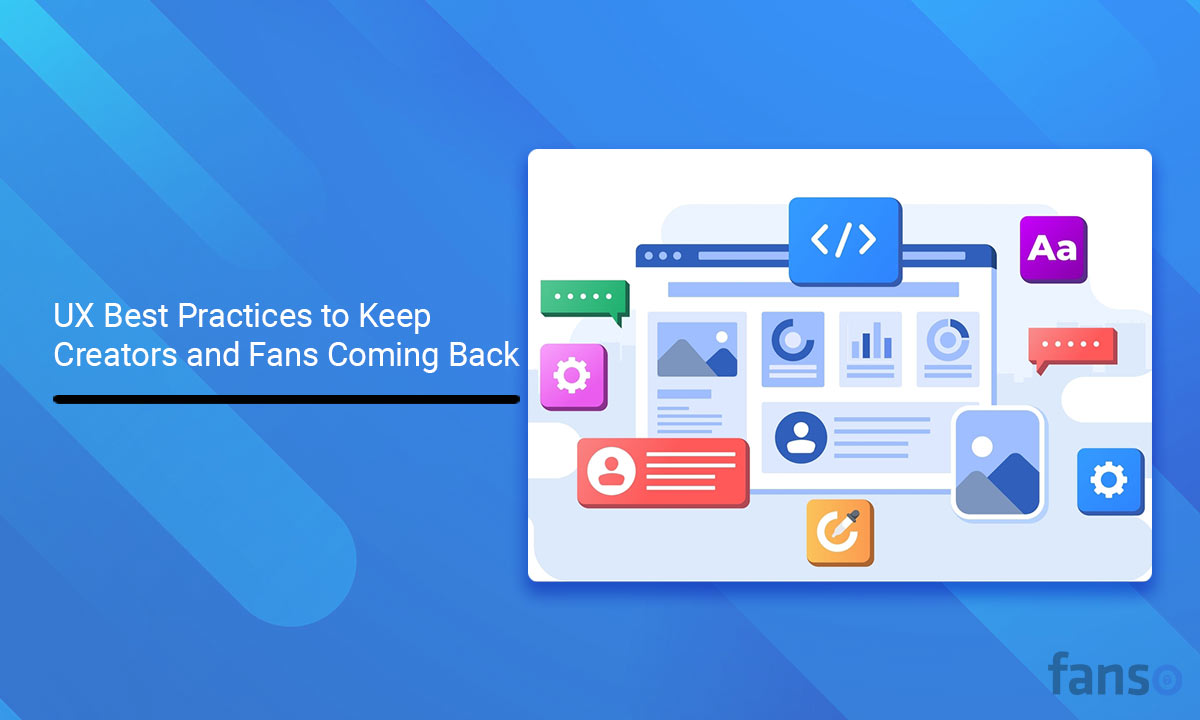A great UX design is the hook of your product. With AI in the game, UX design is not going anywhere. But here’s the truth: AI still can’t make its own decisions and is not intuitive.
Hence, UX design practices are crucial through the customer journey. John Dorman coined the term in the 1990s. And it’s been proven time and time again that brands with great UX design outperform.
This blog outlines the best UX practices for better user experience and high conversions. So, let’s find what it takes to offer a seamless UX?
Table of Contents
How Important is UX Design in the Customer Journey?
UX design influences the audience’s mindset to great extent.
A good UX design drives better conversions, fuels brand loyalty, and wins user satisfaction. Besides, it reduces the development cost, offers a competitive edge, and efficiency.
The main goal is to create a consistent design. This eases the learning curve and wins a purchase!
Benefits of great UX design that ultimately moves the needle:
-
Intuitive and Easy Navigation
A good UX design improves user interactions and overall workflow. This reduces confusion and maximizes productivity. Uniform design elements and interactions give a sense of predictability.
-
Better Engagement
With an intuitive and user-friendly platform design, customers are more likely to be engaged.
-
Competitive Edge
Is there a way to mark off generic clunky products? A great UX design is a powerful tool to distinguish your business from others.
-
Increased Customer Acquisition & Retention
When you invest in good UX design, you embed features to persuade new and existing customers.
-
Reduced Development Cost
UX design includes usability testing. Thus addresses the issues and concerns users face on the platform.
10 Best UX Practices: Taking Your Platform Design to the Next Level
While UX design is crucial, it comes with great effort. For a seamless platform experience, you need to strike a chord with the audience.
Follow these effective UX practices to create a rocking design:
1. User is the King (User-centricity)
“User is the indisputable king.” One of the basic principles of UX design is creating a user-centric experience. The main aim is to create a platform that’s ideal for your audience.
What’s the best way to do that? Create a platform that solves a specific user problem. For this, you need to prioritize the user’s needs, preferences, and behaviour.
The user is the nucleus of your product’s universe.
Create detailed user personas. Use surveys, and interviews to gather feedback on your platform design.
Ask these key UX questions:
- Are you targeting specific audiences or customer segments?
- What are their pain points, expectations & challenges?
- How does your audience currently perform their tasks?
- What are your audience’s expectations from the product?
For instance, Substack’s intuitive interface is perfect for new users. The distraction-free editor is what a writer needs.

2. Usability & Clear Navigation Paths are Crucial
Imagine you land on a popular travel booking platform like TripAdvisor. You notice a big search bar with clear directions on whether you want to search for the best hotels, things to do, restaurants, or flights. A visitor knows exactly where to head and what to do!

Simply put, your platform must be easy to get started! For this touch any of these key points — learnability, efficiency, re-familiarize, satisfaction, or user control.
The best way is to have a clear hierarchy to help users to clearly navigate. On the other hand, if your website is difficult to read or navigate, they won’t stick for long!
While aesthetics is important, usability is what brings your users closer to your site’s purpose.
Solution: If this question lingers — would your users find your website intuitive? Usability testing could give you the answer! It evaluates your platform’s user experience. Start with defining a goal and target audience (e.g., testing the checkout process or search tool).
Perform usability testing during these phases – before design phase, after you create a wireframe or prototype, before launch, and fixed intervals after launch.
3. Make Your Website Accessible
Is your website accessible to everyone regardless of their disability and impairment? While many websites neglect web accessibility, it’s an essential UX practice.
It means supporting a design or development that helps all users interact with your product or service.
The World Wide Web Consortium (W3) has developed the WCAG principles for creating an accessible website.
It includes four principles for web accessibility:
- Perceivable – Your website must be understandable and visible to users (even people with low vision or blindness).
Solution: Offer text alternatives to even visual content like images, audio, and audio. Add alt-text for images, so it’s easily perceivable by screen recorder software. Ensure subtitles are in-sync with your video content.
- Operable – Users can use every functionality of your website — keep the functionalities simple and operable.
Solution: Ensure your website is completely operationable using a keyboard. Provide ample time for users to engage with your website (e.g., accessible drop-down menus)
- Understandable – Your website pages must be organized and easy-to-understand. It should be digestible enough for people with cognitive disabilities as well.
Solution: Clear and readable content headlines. No technical jargon or regional slang.
- Robust – This means your website is interpreted by even assistive technologies.
Solution: Ensure your site’s HTML file is nested with start and end tags and avoid duplicate IDs.
Pro Tip: Evaluate your site’s web accessibility score online using different tools like webaccessibility.com.
4. Ensure Mobile-Responsive
The next-generation of customers is on the mobile — you can’t afford to test their patience. They need instant and seamless interaction. Clunky interface, unresponsive layouts, unwieldy navigation, or blurry images are major turn-offs!
You can’t lose your customers — because mobile traffic is gold! Think for small mobile screens first. Because once your platform is mobile optimized then you can easily expand it for larger screens.
Mobile-responsive design is not squeezing your platform design to fit small screens. Instead, rethink navigation, content layout, and buttons.
5. Consistency
Consistency is one golden rule your website can’t avoid. From Gestalt’s Law to Nielson’s 10 heuristics, consistency is a core principle that satisfies your users.
Although the consistency vs. coherence debate still persists, predictability can’t be compromised. The basic goal is to create a predictable and familiar user experience. This reduces the user’s cognitive load and helps them easily focus on their task!
Different forms of consistency are:
-
Visual Consistency
Don’t give users a hard time figuring out things on your page. The greatest brands evoke their brand loyalty with signature colours and fonts.
For example, Netflix’s red, Substack’s orange, and YouTube’s red. Create a visual hierarchy or predictable pattern with fonts, images, buttons, colors, etc.
💡 Pro Tip: Consider essential visual elements like colour choices, form design, button styling, and typography pairing.
-
Functional Consistency
A specific mechanism or aspect should function in the same way across the entire platform for users. This could span across different tools of the same brand. For example, you could use a particular button for the same function throughout your platform.
-
Brand Voice & Tone Consistency
You can’t write whether your brand is authoritative or quirky, but you must show them. How? It’s the way you converse with your users!
Moral: Brand voice and tone matter!
So, craft your website, CTAs, notifications, emails, and social media messages wisely. In a way that aligns with your brand mission and values.
For instance, Patreon puts forth a creative, empowering, and bold tone.

💡 Related : How to make an app like Patreon?
6. Consider the Context of Use
When do users use your product or service? It’s essential to consider the conditions or environment in which your software is used. This involves delving deeper into your product’s usage scenario: users, environment and tasks.
Now, let’s talk about the context! It helps to fulfil users needs at that specific moment. Rethink about aligning with real-world problems, actual pain points, and better accessibility.
Key questions for defining the context of use:
- When do users engage with your products most?
- What are the challenges while using the product or service?
- What’s happening to them when they use the product or service?
- What makes (or triggers) users use the product or service?
Solution: Invest in field studies, personas, scenarios, task analysis to research more about context of use.
7. Performance Optimization
With cut-throat competition among platforms, performance optimization is the need-of-the-hour. You can’t lead the rat race with slow loading speeds, database inconsistencies, or memory issues.
Performance optimizations means fine-tuning your website to these bottlenecks. And ensuring it is up and running in different conditions like high traffic, slow network, or massive data volumes.
Let’s take a look at common performance issues and their solutions:
- Slow Loading Speed – Implement techniques like lazy loading, caching, and reducing HTTP requests.
- Unresponsive Mobile Design – Start with core mobile user experience before thinking for larger screens.
- Memory Issues – Efficient memory management by minimizing the image & file sizes like CSS, Javascript, etc. Optimize server resources for effective resource handling.
- Surge in Traffic– Lower the HTTP requests by combining files, browser caching, etc.
8. Create Clear Copy
Creating a pixel-perfect copy is an essential part of user experience! A perfect copy includes — clear, concise , and useful content. Why does a clear copy matter in UX?
Simply put, it moulds your user experience and drives conversions. You can find microcopies on buttons, error messages, search prompts, push notifications, etc.
In “A Pocket Guide to The Craft of Words” the microcopy is stated to be an art of words at microlevel. Look for those connecting points: interactions, interfaces. It guides users through their product journey.
Micro-copy fits into the larger context of UX writing and you need to know the entire UX design and writing to make sense.
Consider these few copywriting principles to craft an amazing copy:
- Create clear, small sentences; avoid technical jargon or slang. (To the 8th grade-level reading)
- Get straight to the point; avoid walls of text.
- Start with verbs to provide clear directions. (E.g., “Shop now”, “Add to Cart”, Purchase Now”)
- Messages should explain what’s happening and not go into the details.
9. Test and Iterate to Create the Unbreakable
Your UX design or copy is a masterpiece live on the internet. So, publishing something out on the internet without testing isn’t right for your business.
Usability testing assesses the usability and functionality of your website or software in terms of design or development. Observe real users using the product or service, analyze their user behaviour and record the outcomes.
Here are different types of usability testing:
-
A/B Testing
The most popular approach of performance testing. Provide a series of approaches & combinations to users. See how they use the product and record the results.
-
Card Sorting
This ensures your website architecture is optimized for your audience. Here your website’s features are sorted into groups.
-
Tree Testing
This evaluates the information hierarchy of your website. A website might be categorized into broad topics and subtopics. Tree-testing traces vague navigational labels.
-
5-Second Testing
What’s your customer’s first impression after visiting your website? Probably, 5-second testing could hold the answer! Tell a user to observe your website or landing page for five seconds. Next, ask a few questions on the page’s purpose, intended target audience, and design. The answers are a true test of your page.
-
Eye Tracking
This involves observing your users eye-movements when they visit the website, product, or prototype. You need an eye-tracking tool to perform this test. Place your CTAs at strategic places where users are likely to notice & convert!
10. Gather User Feedback
Real users, real experiences do matter. Hence, the last step is to gather user feedback.
Why is collecting feedback essential?
By gathering the essential data-driven insights you are laying the foundation for a user-centered product. You can build trust, customer loyalty and engagement.
If you thought user feedback is a one-time event. Think again, it’s a continuous cycle gathered at diverse scenarios — from ideation to post-launch.
Different stages for gathering user feedback and techniques are:
- Ideation Stage – User interviews, surveys and questionnaires
- Testing Stage- Usability testing
- Prototyping Stage- Usability testing
- Post-launch Stage – Feedback buttons and forms, analyzing user behaviour
Analyzing user behaviour shows a few aspects. For instance, how users interact with your product, navigate across pages, and identify user patterns.
Consider Substack’s podcast support and paywall customization. These are byproducts of user feedback. Substack notes is an active community to voice opinions.

What Keeps Creators and Fans Coming Back?
Good UX is not just about creating impressive design. Creators and users also keep coming back for the experiences. For creators, it’s about creating a thriving ecosystem. On the other hand, for users, it’s all about the engagement!
| Users | UX Aspects |
| Creators | Seamless Onboarding |
| Powerful Creation Tools | |
| Easy and Diverse Monetization Options | |
| Performance & Analytics Tools | |
| Supportive Community and Resources | |
| Fans | Strong Creator-Fan Communication |
| Easy Creator discovery & personalized recommendations | |
| Content Previewing Options | |
| Easy Payments | |
| Exclusive Content & Rewards |
Conclusion
A great UX design is all about defining a positive user experience. The above UX best practices help to create a platform that engages and retains users.
Create feedback loops that involve users at every stage of development. This minimizes development cost and creates a user-centric design.
The best way to ensure seamless UX experience is to use proven industry frameworks. And readymade clone scripts like Fanso.io are perfect examples for that! You can build membership platforms like Cameo, OnlyFans, Patreon within a few weeks. Planning to start your community platform? Let’s connect; you’ll get a detailed roadmap by the end of the call!
💭 Related Reads:
FAQs for UX Best Practices
1. Why do UX design matter for websites and apps?
When you focus on UX design:
- Makes your website intuitive and easy to use
- Customers are more likely to be engaged
- Increases customer acquisition and retention
- Provides a competitive advantage
- Reduces the overall development cost
- Provides better ROI
- Increases user satisfaction & better ROI
2. What is the 80-20 rule in UI UX?
The Pareto Principle (80-20 principle) is that 80% of user satisfaction comes from 20% platform features. Hence, designers must focus on optimizing those 20% for better user experience.
3. What are the 7 UX principles?
The 7 basic UX principles for designing your platform are:
- User-centricity – First and foremost, value the user behaviour and needs
- Consistency – Offer a consistent brand tone and experience throughout your website
- Simplicity – Focus on the essential elements of your website, refining the user experience
- Flexibility – Offer personalized user experiences by customizing individual needs
- Accessibility – Ensure your website is accessible to all users regardless of their disabilities and impairments
- Usability – Your website should have a minimal learning curve
- Feedback – Including timely feedback loops can make your platform more user-centric.
4. How can AI and machine learning help you with UX design?
AI and machine learning can help to:
- Create detailed user personas
- Collect user data and insights across different customer touchpoints and make data-driven decisions
- Automate repetitive tasks like user research, content generation ideas, refining copies
- Optimize website accessibility by analyzing content structure, generating alt text, or voice-assisted navigation


